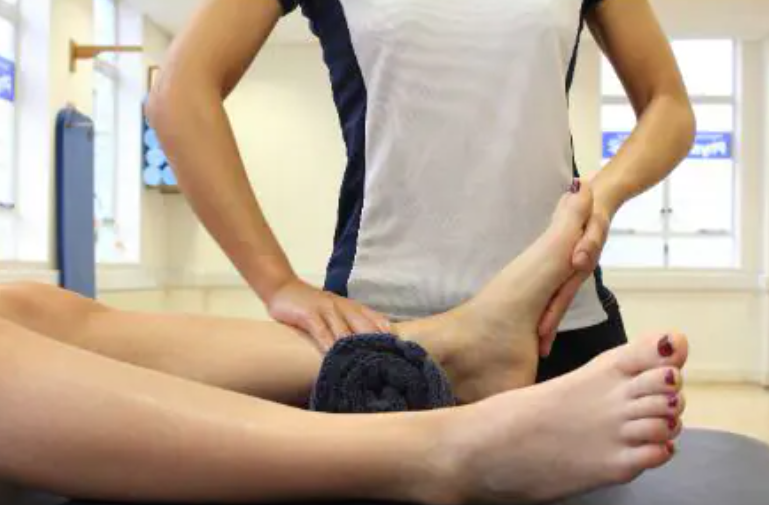Solving the Puzzle of Metatarsalgia
March 27 2024
Learn how to soothe the pain of metatarsalgia and keep your feet happy and healthy!
#MetatarsalgiaPainRelief 🦶 #HappyFeetHappyLife 🌟 #FootHealthMatters 👣 #StepWithComfort 🚶♀️ #FootPainNoMore 💪 #WalkWithoutPain 🚶 #LoveYourFeet ❤️ #HealthyFootsteps 🦶 #FootCareTips 🌿 #StayActiveStayPainFree 💃
Metatarsalgia is a prevalent foot condition that affects a large number of individuals, causing discomfort and inflammation in the ball of the foot, specifically around the metatarsal bones. These metatarsal bones are crucial as they bear a significant amount of weight and are essential for maintaining balance and mobility. When metatarsalgia strikes, it can severely impact your daily activities, making walking and standing painful and challenging. Therefore, having comprehensive understanding of this condition, including its symptoms and treatment options, is crucial for effectively managing its effects and improving your quality of life.
Metatarsalgia often manifests as a sharp, burning pain in the ball of your foot, which can be particularly noticeable when standing, walking, or running. This pain may worsen with activity and improve with rest, but it can also become persistent if left untreated. In addition to pain, you may experience other symptoms such as:
1. Pain that radiates to your toes: The discomfort may extend from the ball of your foot to the toes, feeling like you are standing on pebble or sharp object.
2. Numbness or tingling: Some individuals with metatarsalgia report sensations of numbness or tingling in the toes, which can be a sign of nerve irritation.
3. Swelling and tenderness: Inflammation in the affected area can lead to swelling and tenderness, making it uncomfortable to touch or apply pressure to the ball of the foot.
4. Difficulty wearing certain shoes: Shoes that put pressure on the metatarsal heads may exacerbate symptoms, leading to discomfort or pain while wearing them.
These symptoms can vary in intensity and may come and go, depending on the underlying causes and aggravating factors. It’s essential to pay attention to these signs and seek medical advice if you experience persistent or severe symptoms.
Metatarsalgia can be caused by a variety of factors, many of which involve increased pressure or stress on the metatarsal bones and surrounding tissues. Some common causes include:
1. Foot anatomy: Certain foot structures, such as having a high arch or a second to longer than the big toe (known as Morton’s toe), can contribute to metatarsalgia by altering the distribution of weight across the foot.
2. Foot deformities: Conditions like bunions, hammertoes, or claw toes can disrupt the normal alignment of the toes and metatarsals, leading to increased pressure on specific areas of the foot.
3. Improper footwear: Wearing shoes that are too tight, narrow, or lack proper cushioning and support can increase pressure on the balls of the feet. High heels, in particular, can shift the body’s weight forward, placing additional strain on the metatarsals.
4. High-impact activities: Engaging in activities that involve repetitive impact on the feet, such as running or jumping, can strain the metatarsals and surrounding tissues, leading to inflammation and pain.
5. Overuse injuries: Excessive or sudden increases in physical activity can overload the metatarsals and lead to overuse injuries, including metatarsalgia.
6. Foot abnormalities: Conditions like flat feet (pes planus) or excessive pronation (rolling inward of the foot) can alter the biomechanics of the foot, increasing the risk of developing metatarsalgia.
7. Obesity: Being overweight places additional stress on the feet and can increase the risk of developing metatarsalgia, especially if combined with other risk factors.
8. Age: As people age, the fat pad in the ball of the foot may thin out, reducing its ability to cushion and protect the metatarsals, leading to increased pressure and discomfort.
By addressing these underlying causes, individuals can reduce the risk of developing metatarsalgia and improve their overall foot health.
Treatment for metatarsalgia aims to relieve pain, reduce inflammation, and address any underlying causes to prevent recurrence. Depending on the severity and cause of your metatarsalgia, your healthcare provider may recommend one or more of the following treatment options:
1. Rest and Ice: Resting the affected foot and applying ice packs can help reduce pain and inflammation. Ice should be applied for 15-20 minutes at a time, several times a day.
2. Change in footwear: Switching to shoes with a wide toe box, adequate cushioning, and good arch support can help relieve pressure on the metatarsals. Avoid high heels and shoes with narrow or pointed shoes.
3. Orthotic inserts: Custom or over-the-counter shoe inserts (orthotics) can provide support, cushioning, and proper alignment for the foot, reducing pressure on the metatarsals.
4. Medication: Nonsteroidal anti-inflammatory drugs (NSAIDs) like ibuprofen can help reduce pain and inflammation. However, these should be used according to your healthcare provider’s recommendations.
5. Physical therapy: Stretching and strengthening exercises can improve the strength and flexibility of the muscles in your feet, helping to reduce pain and improve foot function.
6. Weight management: If you are overweight, losing weight can help reduce pressure on balls of your feet, alleviating symptoms of metatarsalgia.
7. Padding and taping: Metatarsal pads or toe taping can help redistribute pressure on the foot, providing relief from pain and discomfort.
8. Injection therapy: In some cases, corticosteroid injections may be recommended to reduce inflammation and pain in the affected area. However, these injections are usually reserved for severe cases and should be administered by a health care professional.
9. Surgery: In rare cases where conservative treatments have not been effective, surgery may be recommended to realign the metatarsal bones or correct foot deformities contributing to metatarsalgia.
It’s essential to work closely with your healthcare provider to develop a comprehensive treatment plan tailored to your specific needs and circumstances. By following their recommendations and making necessary lifestyle changes, you can effectively manage metatarsalgia and improve your quality of life.
Prevention is key when it comes to metatarsalgia. To reduce your risk of developing this painful condition, consider the following preventive measures:
– Proper footwear: Wear shoes that fit well and provide adequate cushioning and support. Avoid high heels, narrow toe boxes, and shoes with minimal arch support.
– Foot support: Consider using orthotic inserts or arch supports to help distribute pressure evenly across your foot and reduce stress on the metatarsals.
– Gradual exercise: If you’re starting a new exercise routine or increasing the intensity of your workouts, do so gradually to give your feet time to adjust.
– Maintain a healthy weight: Excess weight can put added pressure on the balls of your feet, increasing the risk of metatarsalgia. Maintaining a healthy weight through diet and exercise can help reduce this risk.
– Regular foot care: Keep your feet clean and dry, and inspect them regularly for any signs of irritation or injury. Prompt treatment of foot problems can help prevent them from developing into more serious conditions like metatarsalgia.
Metatarsalgia can be a painful and debilitating condition, but with proper understanding, treatment, and preventive measures, you can effectively manage its symptoms and improve your quality of life.
 If you’re experiencing foot pain or discomfort, consult a healthcare professional for an accurate diagnosis and personalized treatment plan. By taking proactive steps to care for your feet and address any underlying issues, you can reduce your risk of developing metatarsalgia and enjoy a more active and pain-free lifestyle.
If you’re experiencing foot pain or discomfort, consult a healthcare professional for an accurate diagnosis and personalized treatment plan. By taking proactive steps to care for your feet and address any underlying issues, you can reduce your risk of developing metatarsalgia and enjoy a more active and pain-free lifestyle.
If you are experiencing pain you suspect is a metatarsalgia, contact Dr. Rivero’s office at (239) 430-3668 (FOOT) or visit www.Naplespodiatrist.com to schedule an examination.
———————–
Lam Minimal Invasive No-Scar Bunion Surgery! Come Discover Why Patients Love Our 5-Star Foot & Ankle Care! Same Day Appointments! Easy Online Appointment Scheduling!


 Fax: (239) 692-9436
Fax: (239) 692-9436 Tel: 239-430-3668
Tel: 239-430-3668


